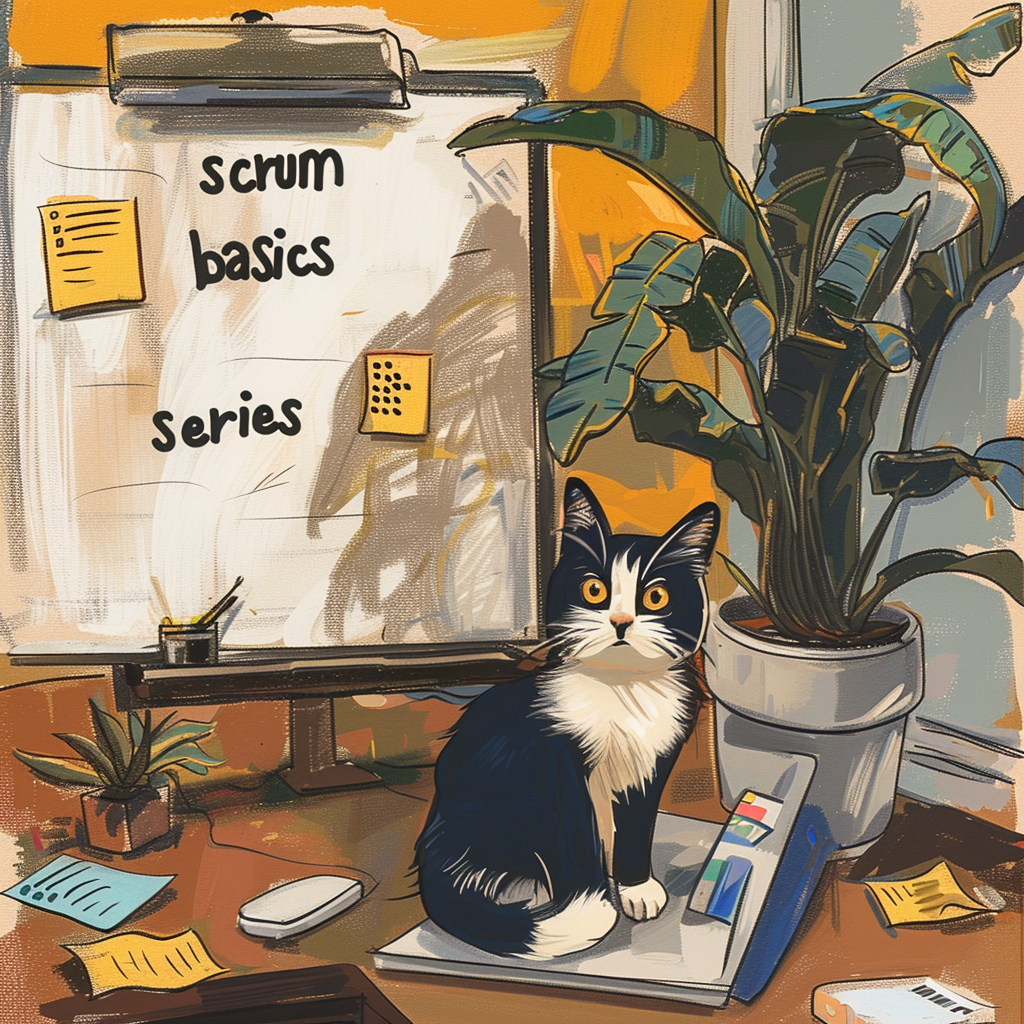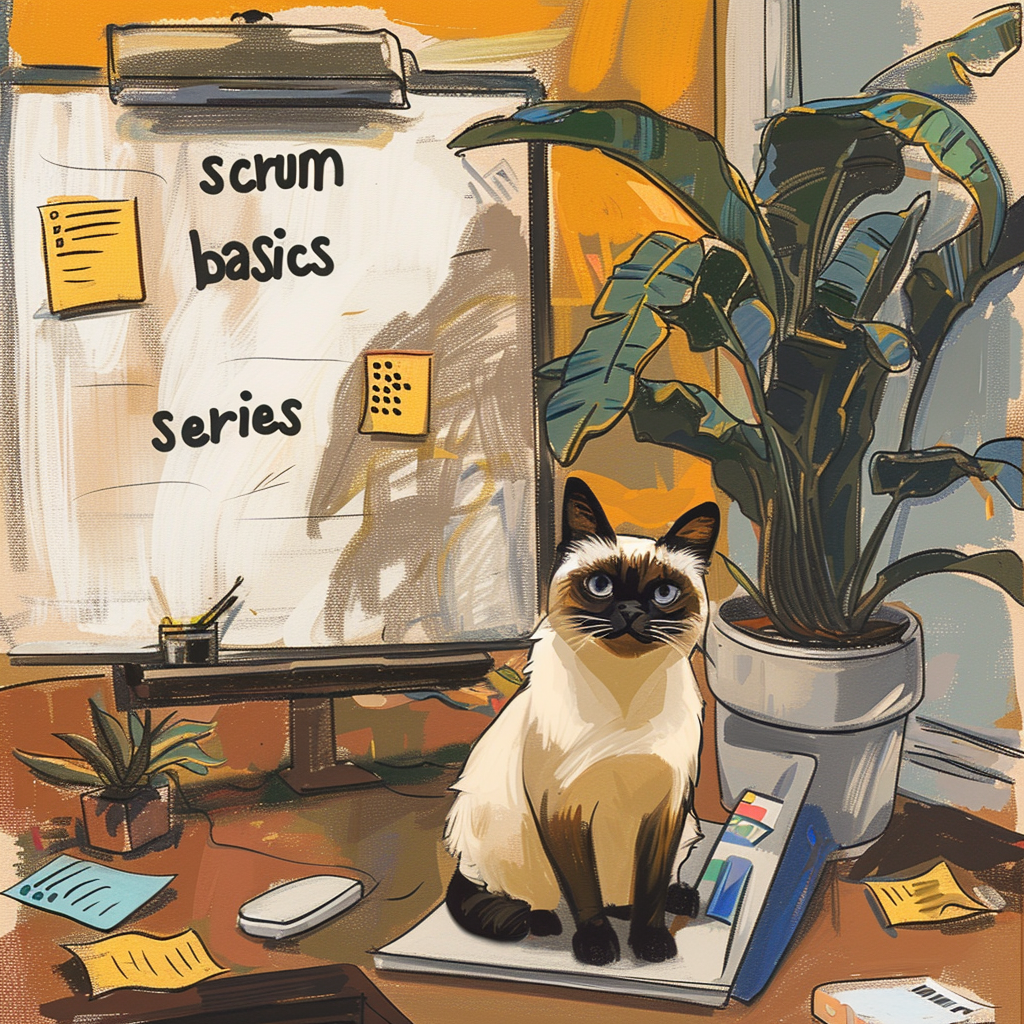Scrum for Beginners 3-5-3 Part 7: Daily Standup Basics and 3 Pro Patterns

Hello! This is Part 7 of a series on scrum using the 3-5-3 framework (3 roles, 5 events, and 3 outputs) where we use the Scrum Guide as a base for our learning.
In this article we will cover:
Click the emoji to jump to each section in the article.
What is the Daily Standup?
The Daily Standup (also called the "Daily Scrum") is one of 5 scrum events as detailed in the Scrum Guide.
As a tip, if you want to know basic information about scrum, the Scrum Guide is a fantastic resource.
The Scrum Guide says:
The purpose of the Daily Scrum is to inspect progress toward the Sprint Goal and adapt the Sprint Backlog as necessary, adjusting the upcoming planned work.
The Daily Scrum is a 15-minute event for the Developers of the Scrum Team.
This tells us that a successful daily standup will give us the following outcomes:
- Insight into our progress toward the Sprint Goal (are we making progress?)
- Opportunity to adapt the Sprint Backlog (How can we improve?)
The questions added to each outcome in parenthesis are what I have used in the past to help capture the effectiveness of the daily standup and to find where it is and isn't working.
The Scrum Guide further goes on to say:
Daily Scrums improve communications, identify impediments, promote quick decision-making, and consequently eliminate the need for other meetings.
Let's add these to our list of outcomes for the daily standup:
- Insight into our progress toward the Sprint Goal (are we making progress?)
- Opportunity to adapt the Sprint Backlog (How can we improve?)
- Improved communication (How is our communication affecting our progress?)
- Opportunity to identify impediments (What is getting in our way of getting work done?)
- Improved decision-making (How easily can we make decisions?)
- Need for other meetings decreases (How much time to implement do we actually have?)
That's a lot of expected outcomes! Next let's see who joins to get these outcomes.
Who joins the Daily Standup?
There are lots of people who can theoretically join the daily standup. However, the Scrum Guide advises against everyone except the developers joining with a few special exceptions:
The Daily Scrum is a 15-minute event for the Developers of the Scrum Team. To reduce complexity, it is held at the same time and place every working day of the Sprint. If the Product Owner or Scrum Master are actively working on items in the Sprint Backlog, they participate as Developers.
The Scrum Guide is very clear on who the daily standup is for: developers.
If you are not currently working on an item in the sprint backlog, your presence is not required.
That being said, there are very good reasons for other roles joining the standup on occasion. Here are a few common cases where other roles may be present:
- The team is actively seeking feedback from a scrum master or agile coach on their daily standup process
- The team is new to scrum and needs guidance
- The team is new and still learning how to communicate with each other
- The team is multi-lingual and not all members speak the same language
- The team has had an incident that requires support from outside the Scrum team to help solve impediments
The important thing to keep in mind is the daily standup is when the developers adapt their plan based on what they learned from the previous day's work. Most of us get in the way of that and without meaning to, have a negative effect on all of those expected outcomes we listed earlier.
If more than just developers will be joining your daily standup, it is recommended to inspect the daily standup frequently to ensure developers are getting the outcomes they desire.
3 Daily Standup pro patterns for any team
Here are 3 quick pro patterns for more productive daily standups:
1. Be aware of the trade-offs for daily standups lasting longer than 15min
15 minutes is the maximum allotted time for the daily standup according to the Scrum Guide. This doesn't mean that daily standups can't or shouldn't be longer.
It does mean that once the desired outcomes are met, the meeting should end so the developers can get back to what they do best.
2. Keep your sprint board up to date
For teams who are using a sprint board (physical board, JIRA, Azure DevOps, Asana, Trello, etc) make sure it is up to date for your daily standup.
The team can spend less time getting caught up on details and more time moving toward a workable plan for the day.
My advice is to always start with the outcome in mind: what do we want to get out of this retro?
3. Change some of the questions you ask in your daily standup
There are three essential questions in the daily standup according to the 2017 Scrum Guide:
What did I do yesterday that helped the Development Team meet the Sprint Goal?
What will I do today to help the Development Team meet the Sprint Goal?
Do I see any impediment that prevents me or the Development Team from meeting the Sprint Goal?
These have since been removed in the newest 2020 edition of the Scrum Guide to make room for more self-organization. We have learned that this format does not work for everyone.
Some teams find these questions helpful and continue to use them.
Here are a few more questions that can be asked for effective daily scrums:
- Where are we right now?
- Are we on track toward the sprint goal?
- Where do we want to be tomorrow?
- What should we do today to get there?
- How confident are we that we can meet the sprint goal?
I hope this helps clear up some basic information about the daily standup and gives you some inspiration for how you can make your daily standup more effective.




